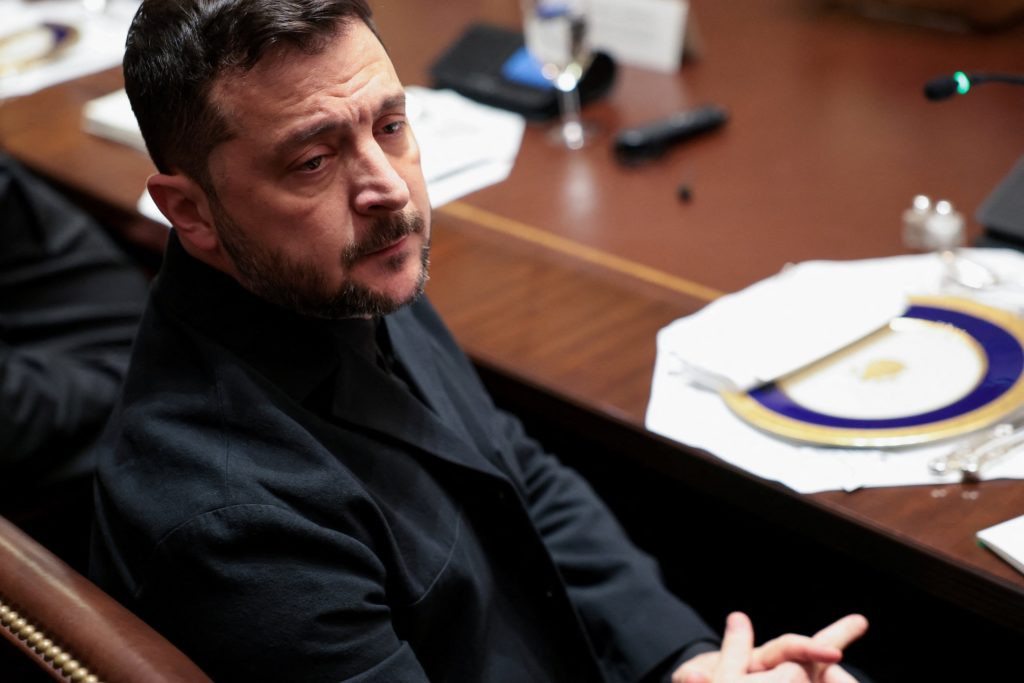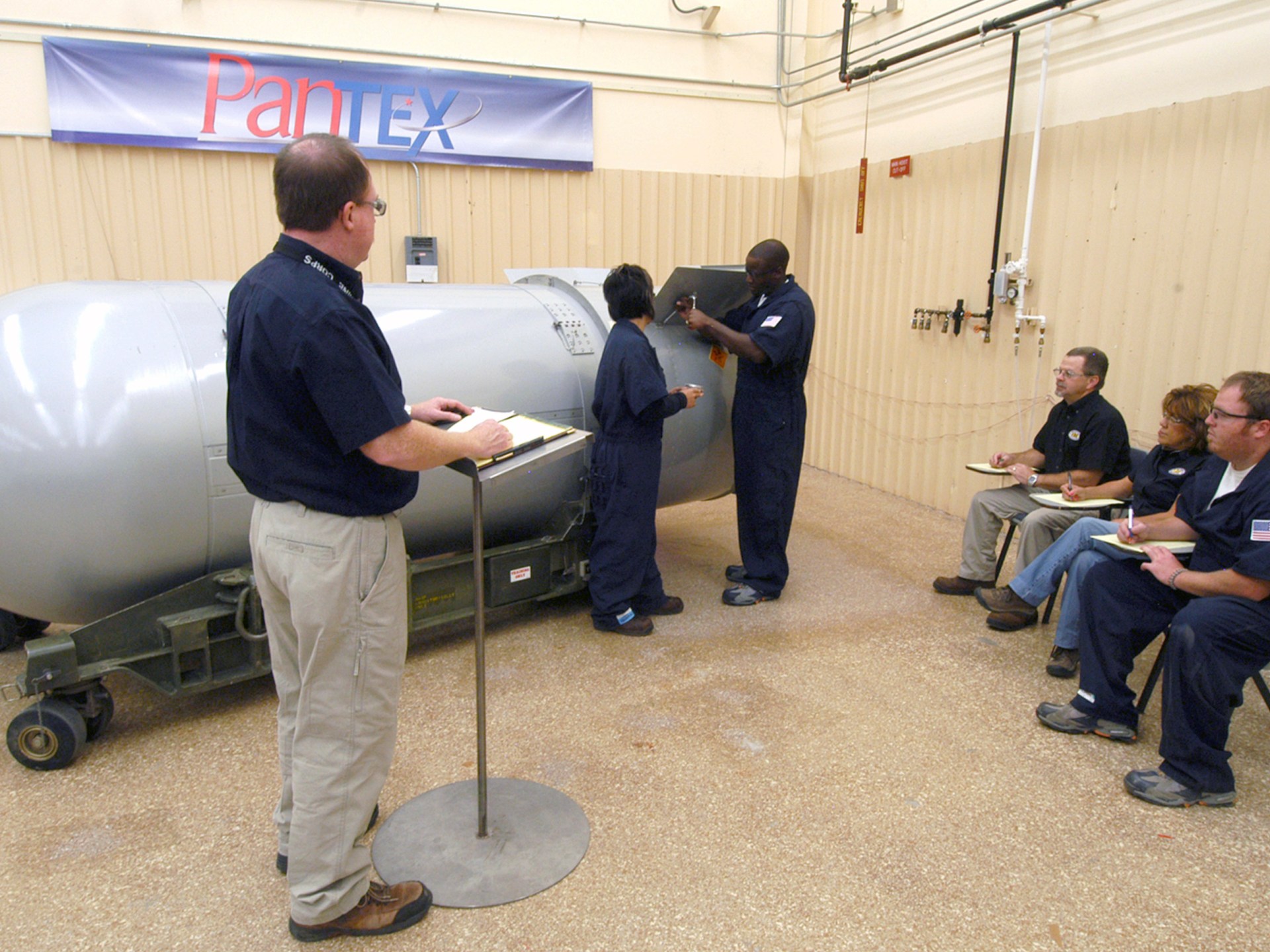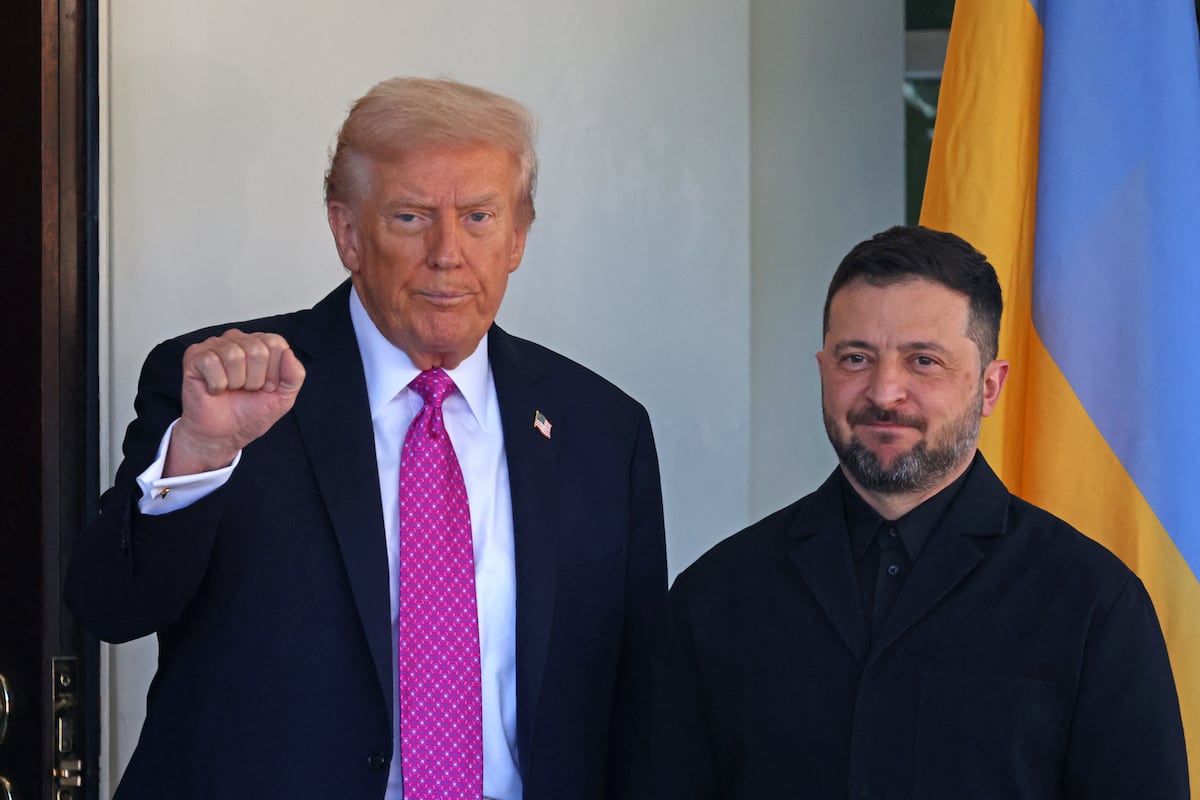Amna Nawaz :
Welcome to the “News Hour.”
Ukrainian President Volodymyr Zelenskyy returned to Washington today to meet with President Trump, who is continuing his efforts to bring an end to Russia’s nearly four-year invasion.
Geoff Bennett:
But Mr. Trump didn’t seem willing to give Ukraine what it really wanted from the visit. That’s long-range U.S. Tomahawk missiles that could strike deep into Russia.
And, late today, while Zelenskyy was speaking with reporters, Mr. Trump posted on social media that Russia and Ukraine should — quote — “stop where they are. Let both claim victory. Let history decide.”
For the second time in as many months, Ukrainian President Volodymyr Zelenskyy was back at the White House today pressing President Trump for greater U.S. assistance in the war with Russia.
Volodymyr Zelenskyy, Ukrainian President:
I think that I’m confident that, with your help, we can stop this war. And we really need it.
Geoff Bennett:
This time, the aid request centers on long-range U.S.-made Tomahawk missiles, the kind of weaponry Ukraine first sought under the Biden administration and now seeks again from President Trump, who for months has sounded reluctant to provide it.
Donald Trump, President of the United States: Hopefully, we will be able to get the war over without thinking about Tomahawks. And it could mean big escalation. It could mean a lot of bad things can happen.
Geoff Bennett:
Today’s meeting comes on the heels of a lengthy phone call yesterday between President Trump and Russia’s Vladimir Putin. In that conversation, Mr. Trump floated his openness to giving Ukraine the long-range weapons.
Donald Trump:
I did actually say: “Would you mind if I gave a couple of thousand Tomahawks to your opposition?”I did say that to him. I said it just that way. He didn’t like the idea.
(Laughter)
Geoff Bennett:
Putin, according to a top adviser, warned President Trump during their call that Tomahawks wouldn’t change the situation on the battlefield, but would cause substantial damage to the U.S.-Russia relationship.
The two leaders have planned a possible second summit in Budapest, Hungary, after their initial Alaska summit back in August failed to advance peace talks. The fight itself has long been in a stalemate. This map shows Ukrainian territory Russia controlled exactly one year ago. And this map shows what Russia controls today. Neither side has made substantial territorial gains.
Maj. Gen. David Baldwin (Ret.), U.S. National Guard: The Ukrainians understand that no single weapon system is going to be a game changer or, more importantly, a game ender for the war.
Geoff Bennett:
Retired Major General David Baldwin was recently adjutant general of the California National Guard, which has been training Ukrainian troops since before the full-scale invasion by Russia. He says the U.S. weapons would make a difference.
Maj. Gen. David Baldwin (Ret.):
It will change sort of the strategic effects of what’s going on in the negotiations, because now the Ukrainians will be able to have enhanced capability to reach out and strike targets in Russia.
Geoff Bennett:
Designed to fly below radar detection, the weapons can strike targets more than 1,500 miles away, deep into Russian territory well beyond Moscow, targets like key military sites, oil and energy infrastructure.
For months and as recently as yesterday, Russia has bombarded Ukraine’s energy infrastructure with hundreds of drones and missiles, causing widespread blackouts. Zelenskyy today said the weaponry would help compel Putin to negotiate.
Volodymyr Zelenskyy:
I think that Russia is afraid about Tomahawks, really afraid, because it’s a strong weapon. And they know what we have, what kind of weapon we have, our production, and they understand that combination with Tomahawks, because we speak about it.
Geoff Bennett:
To help dissect the current state of affairs, we turn to Jon Finer. He was the deputy national security adviser during the Biden administration. He’s now a distinguished visiting fellow at Columbia University School of International and Public Affairs.
Welcome back to the program. It’s good to have you.
Jon Finer, Former U.S. Principal Deputy National Security Adviser:
Thanks. Great to be here.
Geoff Bennett:
So, in recent days, President Trump has sent mixed signals about sending Tomahawk missiles to Ukraine. Today, he sounded disinclined to do so. Zelenskyy made the same request of the Biden administration and was turned down.
What’s the dilemma this current White House faces when deciding whether or not to provide these weapons?
Jon Finer:
Well, to be honest, I wish I didn’t have to say this, but I’m not terribly surprised that it looks like the White House is moving away from providing Tomahawks.
And that’s because, if anything, since the White House — this White House inherited Ukraine policy from the Biden administration, they have done less for Ukraine over time, not more. So the idea that they would have handed the Ukrainians an even more advanced system than was provided during the Biden administration, I think, always seemed unlikely.
But, in some ways, what’s even more damn much more than damaging then the idea that they’re not going to be providing the Ukrainians, a system the Ukrainians believe they need, is that it appears that President Trump has basically acknowledged asking Russia what it thought of this move, hearing a very negative reaction from President Putin, and then moving against an idea that he had been contemplating because he didn’t like how Russia reacted to it and because he doesn’t want to sour the mood in advance of an upcoming summit meeting with President Putin in Hungary in the coming days.
And so the rationale almost seems, in this case, is damaging as the fact itself, which is that he doesn’t seem to want to cross the wishes of Vladimir Putin.
Geoff Bennett:
Well, say more about that, because the Kremlin reportedly requested yesterday’s call between Presidents Trump and Putin. And, as you say, now Trump says that he’s open to meeting Putin for a second summit, potentially within weeks.
What’s the play here, Putin requesting this conversation on the eve of Zelenskyy’s visit?
Jon Finer:
Well, with the caveat that obviously I’m not on the inside of any of this anymore, but it seems pretty clear just from observing and because we have seen this play run once before.
You will remember that, a few months ago, President Trump for the first time started to grow frustrated with Russia, started to believe actually that it wasn’t Ukraine that was responsible for this war being continued against President Trump’s wishes, but Ukraine actually saying yes to a bunch of the president’s cease-fire request and Russia then saying that it wasn’t interested in a cease-fire.
That got President Trump irritated. He said that he would impose severe consequences on Russia. And he said that even just hours before meeting with President Putin in Alaska. Then, during that meeting, he treated President Putin with a high degree of respect, almost reverence, the red carpet. You will remember President Putin riding in the back of President Trump’s limousine.
And then coming out of that meeting, all of a sudden there was no more talk of severe consequences, economic consequences in that case. And the president went back to musing about negotiations to try to end the war in a different way.
I think the Russians learned a lesson from that case, that these big grand meetings in some ways are something that President Trump covets, that he likes being seen on the big stage with someone he, for reasons I can only speculate about, respects, President Putin, and that offering another one of those sessions would be a way to turn down the temperature in the United States and in this administration and prevent them from moving forward with a more aggressive policy position.
It seems to be working for now, and we will see what happens during this meeting in Hungary, which I guess will be the next step. They will send some staff out before that to prepare the meeting, but the next big step is going to be President Putin and President Trump getting together again, and we know how that ended last time.
Geoff Bennett:
On the battlefield, this war appears largely stalemated, with neither side making significant territorial gains. What does that say about where this conflict stands and how realistically it might end?
Jon Finer:
Well, I think it’s worth just acknowledging that, in and of itself, what you have just described, is an extraordinary accomplishment, first and foremost, for the people of Ukraine and the Ukrainian military, that they have held off a, by all estimations much larger, much stronger military force, who people believed before this war began would march all the way to Kyiv and possibly even conquer all of Ukraine in a matter of weeks.
And now here we are three years on, with the war still being fought in the extreme eastern part of Ukraine, and at great cost. The Ukrainian people have paid an enormous price for the stalemate that has been achieved, and they deserve, I think, a tremendous amount of respect and admiration for holding off the Russian army.
The cost being imposed, by the way, on the Russians is extraordinary as well. We estimate now more than a million casualties dead and wounded on the Russian side. And so, given the developments in the Russian conversations with the United States and the fact that the presidents will be seeing each other, given what happened at the White House today and the idea that the U.S. is not going to be, it looks like, ramping up support for Ukraine any time soon, it does appear this conflict will be stalemated for the foreseeable future.
Geoff Bennett:
Jon Finer, thanks, as always, for your perspective. We appreciate it.
Jon Finer:
Thanks.


